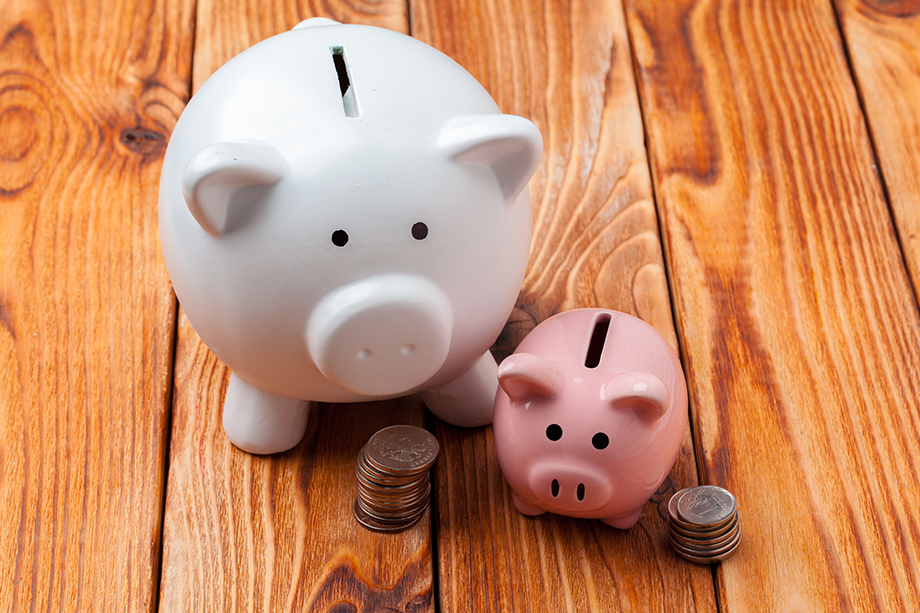Historically, money was something that was hardly ever discussed. Forget teaching about it in schools, talking about money with anyone was considered inappropriate. But times are changing – and for the better.
Financial literacy in the United States
According to a 2019 study of financial literacy by Organisation for Economic Co-Operation and Development (OECD), over 20% of American teenagers are considered financially illiterate. At best, these teenagers can maybe identify financial products and terms, and make simple decisions regarding every day spending. To offer perspective, this number is much lower in other countries, like China and Russia, where only one in 10 teenagers has the same illiteracy.
Why is financial education important?
The wealthy are living proof that financial education is one of the most important life skills you can have. Without it, how do you learn about using a credit card properly? How do you learn how to create a budget? How do you learn to invest in the stock market? How do you become a real estate investor? How do you manage a retirement account?
Error: Campaign not found.
These basic life lessons simply don’t exist in our school system. In fact, our government has failed generations of students when it comes to getting the financial education necessary for them to succeed in life. Maybe it’s by design, to keep the masses working for corporations and in debt up to their eyeballs (see Lesson 4 below). Maybe they’re aware of this data, but don’t know how to change the curriculum accordingly? Or maybe it’s a massive oversight — but that sure seems unlikely, given the attention it receives.
According to the Survey of the States— a comprehensive look into K-12 economic and financial education, conducted biennially by the Council for Economic Education — as of 2020:
only 21 states require high school students to take a course in personal finance, and
only 25 states require high school students to take a course in economics.
You don’t need a higher education to see that that’s a failing grade.
But it’s not only the fault of the schools. According to a study done by CNBC in 2022, 31% of parents admit to never discussing finances with their children.
So where does that leave us? Only a startling 57% of adults in the United States are considered financially literate.
The truth is, the system isn’t necessarily in our favor; but when it comes to financial literacy for kids, the change can start at home.
Parents can regain control
Despite how alarming the statistics on financial literacy are, there is hope in the future when we realize that we can offer up some knowledge when talking about finances with our kids.
First, as an adult, it’s imperative you take matters into your own hands and teach yourself these topics if you ever want to get out of the rat race. And, if you’re a parent, you’ll need to provide this financial education to your children at home, on your own time, since you can’t rely on their schools to do it.
It all begins with setting the foundations of financial literacy. There are four basic components to this, understanding each one will set your kids up for success.
- Understand the difference between an asset and a liability
You may have noticed this is a recurring sentiment in our articles. There is simply no other way to put it: this is the core of financial freedom.Many people think they know the difference. For example, some may think that having a house is an asset, and they’re wrong.The simplest way to define the difference is that an asset is something that puts money into your pocket, while a liability, on the other hand, takes money out of it. In the example listed above, a house is a liability because it comes with a mortgage, maintenance, taxes, etc.A house can become an asset when you have a tenant that pays rent, and covers any expenses associated with the house. Once you’ve generated cash flow from your house, it’s no longer a liability.Once you learn the true meaning of assets and liabilities, you can get clever and find ways to turn your liabilities into assets.
- Cash flow vs capital gains
One thing you really want to make sure your kids understand, is that cash flow and capital gains are vastly different, even though they’re both investments.Capital gains are the profits one can make on an investment when sold at a higher price than what you purchased them for. This can sometimes be like gambling, because you leave a lot of factors to chance. For example, how do you know the price will actually increase? How do you know when? Here, you’re likely losing lots of money, before making any money.Cash flow, on the other hand, is what the rich do.Someone looking to generate cash flow would buy real estate with someone else’s cash, find tenants to pay the expenses, and collect rent. Cash flow is the money you’ll earn from renters each month after your mortgage and expenses are paid, while you get to enjoy the passive income and real estate domino effect that leads to achieving your financial independence.Capital gains can come down the road, but it doesn’t have to for this to be a win.
- Get rich by using debt and taxes
The financially educated know that both debt and taxes can be used to get rich. Though this sounds confusing, establishing financial literacy for kids means that you cover all the bases. Here, we’ll discuss good debt vs bad debt.Bad debt comes from borrowing money and throwing it at liabilities that will never give you a return that’s worth it.Good debt, on the other hand, comes from borrowing money and using it to purchase assets that, as we stated earlier, put money into your pocket.With taxes, it’s all about being attentive. Tax codes are written to encourage specific types of behavior that, when followed, give you a tax cut. This can include things like building affordable housing, contributing to employment, and more.
- Own your financial decisions
One of the biggest mistakes we can make is letting others make our financial decisions for us. The only way we can teach kids to avoid this cliff is to convey the importance of being financially literate and having confidence about money.Remember, the rich are independent of crowds; they’re the trendsetters. They think for themselves, and make their own financial decisions.
Risks of the Information Age
In Robert Kiyosaki’s book, “Increase your financial IQ,” he discusses the four ages of humanity: The Hunter-Gatherer Age, The Agrarian Age, The Industrial Age, and The Information Age.
Today, we live in the information age. It all began with the rise of personal computers, and the accessibility to all kinds of information via technology.
Error: Campaign not found.
The problem, however, is that losing money – fast – is easier than ever.
Because information flows and changes so quickly, kids can get overloaded with conflicting information, making it difficult to understand and respond to finances effectively. One key to being financially literate is to understand the importance of being proactive. Reacting to every piece of information can be detrimental.
This is yet another reason why financial literacy for kids is crucial.
How important is financial literacy for kids?
The truth is, your child’s financial education is only going to come from one of two places: either learning from their own mistakes (which can range from costly to devastating, depending on the lesson), or learning from you. Isn’t it in your best interest to take a proactive approach to helping your kids navigate the financial waters, so you set them up for a successful future (and don’t become a financial burden on you or our society later in life)? Since our school systems aren’t giving your kids the financial education they need, it’s up to you to take on this responsibility. And the earlier you start, the better.
Now, this may seem like a daunting task to many parents, especially those who don’t consider themselves savvy in their own financial matters and haven’t learned how to achieve financial independence. This is exactly the reason Robert wrote his first book: Rich Dad Poor Dad. His poor dad (who had a Ph.D., by the way), worked hard his whole life yet struggled financially. The only way Robert learned how to be financially literate was from his best friend’s dad (who never finished eighth grade, mind you) — this “rich dad” went on to become one of the richest men in Hawaii because he believed in total financial self-reliance and created his own wealth through owning his own business and investing. If Robert had only taken advice from his own “poor dad,” he would have followed in his footsteps.
But that’s exactly why you must start now—otherwise, your children will end up in the same uncomfortable position someday. You have the power to stop this cycle of financial illiteracy, you just need the right resources to complete your education so you can pass it along to the next generation.
Getting started
The best way to begin teaching money management to kids is by helping them understand the concept of cash flow—money coming in, money going out, and the remaining money at the end of a specific time period (usually a month, quarter or year). Teaching children the relationship between earning, spending and saving will help them understand the value of money. And you’ll definitely want to do this long before they turn 18 and are inundated with enticing credit card offers as they head off to college.
Of course, to the average 9-year old, learning about accounting, finance and investing might sound like a real drag. That’s where game play comes in handy. Because playing games is an incredibly effective way for children (and adults) to learn, consider investing in a tool such asCASHFLOW® For Kids (recommended for ages 7-14) or CASHFLOW board game to accompany your education and teachings. These financial resource board games start you in a typical 9-to-5 job (yawn) and take you on a journey to build up an arsenal of assets that will propel you into the fast track where real wealth is built (the fun part).
For your tech-savvy students, we developed our free online game, CASHFLOW Classic. Learn the same principles of how to get your life on the Fast Track found in our board games but with a world-wide community of like-minded game players.
The CASHFLOW games not only teach you how to invest and acquire assets such as property, stocks, businesses and precious metals, it also teaches you how you behave within various investing scenarios. It’s a safe environment in which you can test out strategies for building wealth you might be reluctant to try in real life. These interactive resources are a great way for the entire family to practice building a more secure future in a fail-safe and lesson-rich zone.
Along the way, remember to also teach your children these bonus tips:
Error: Campaign not found.
Don’t be afraid to ask questions and seek expert advice. That might mean finding the right mentor or coach; other times, it may mean finding a financial advisor that you can trust.
Get to know the different asset classes, and diversify. There are five asset classes to learn about — but once your kids learn the fundamentals of each, most will find one or two that really resonate with them and sink their teeth into learning as much as possible about those.
Take advantage of free training. There is no shortage of online or community options for getting some highly targeted education. Check out the free classes Rich Dad offers.
Make peace with making mistakes. They’re completely normal, and it’s rare to find a linear path to success.Start teaching kids about money early — there’s no such thing as being too young to learn about financial literacy. Plus, it’s the perfect time to head off any wrong notions or misconceptions about finances before they learn bad behaviors from their friends, television shows and other influential sources.
When asked what he thinks is the biggest mistake parents make when teaching their kids about money, billionaire Warren Buffett said, “Sometimes parents wait until their kids are in their teens before they start talking about managing money — when they should be starting when their kids are in preschool.”
They say that families who play together, stay together. But at Rich Dad, we believe that families who play together can retire early and spend their days however they want together. Doesn’t that sound like the quintessential American Dream?





